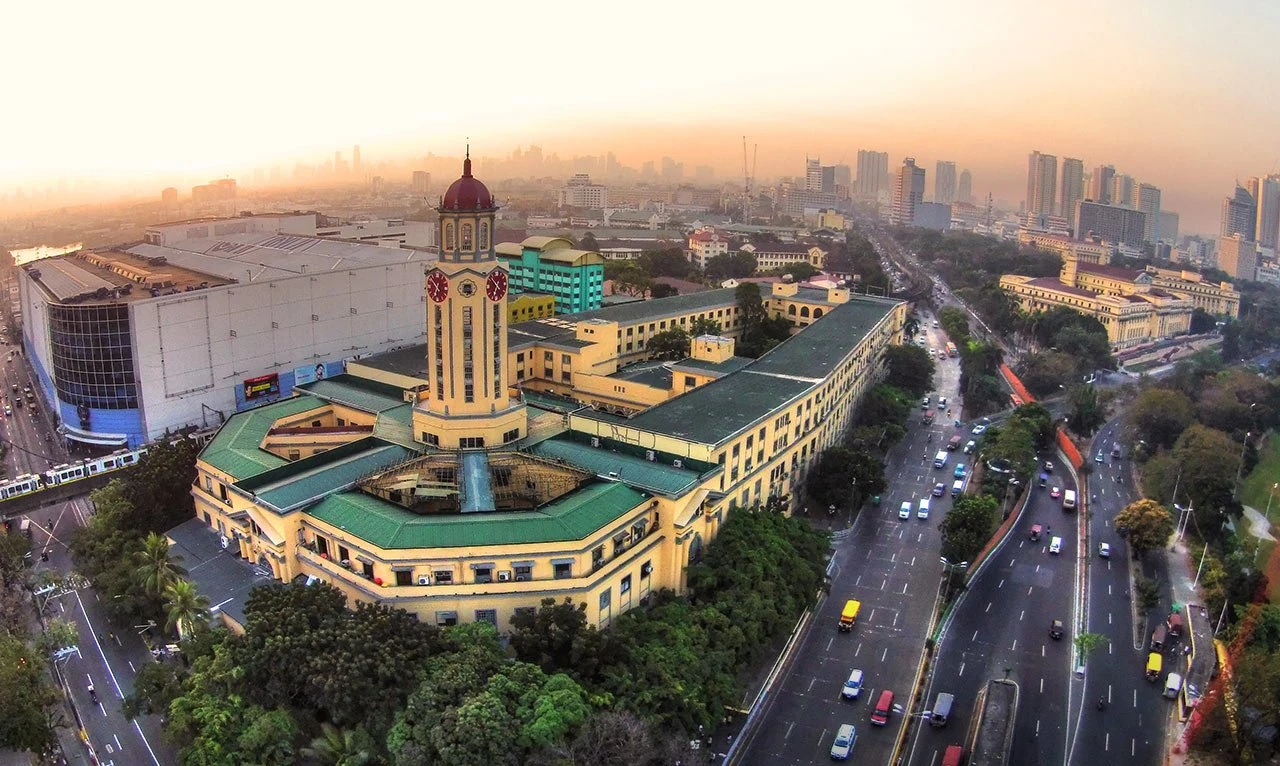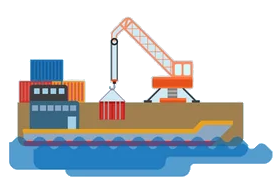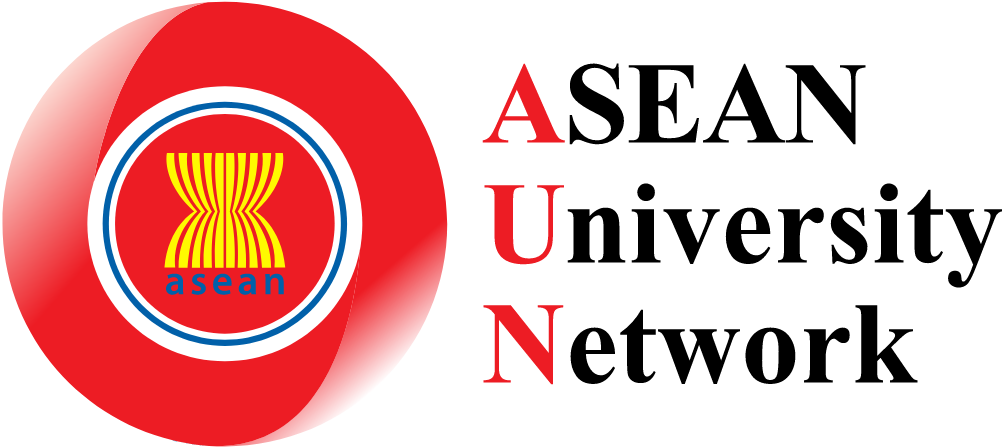
漢德百科全書 | 汉德百科全书
 Philippines
Philippines

Luzon oder Luzón ist die größte Insel der Philippinen und die sechzehntgrößte Insel der Welt. Insel und Inselgruppe Luzon liegen zwischen dem Südchinesischen Meer im Westen und der Philippinischen See im Osten sowie der Luzonstraße im Norden und der Sibuyan-See im Süden. Gemeinsam mit den beiden südlicher gelegenen Inselgruppen Visayas und Mindanao sowie einer Vielzahl kleinerer Inseln bildet Luzon den Inselstaat der Philippinen.
吕宋岛(他加禄语:Luzon;闽南话白话字:Lū-sòng)是菲律宾最大的岛,也是世界第15大岛,面积109,965平方公里。吕宋岛位于菲律宾北部,是首都马尼拉的所在地。吕宋岛在台湾南方,维萨亚斯群岛北方,中国南海东方,菲律宾海西方。《剑桥百科》介绍:“多海湾和近岸岛屿。西北部中科迪勒拉山的普洛格山(为最高点)。马德雷山在岛东北。岛上最大的湖称内湖……产谷物、甘蔗、木材、大麻、铬铁矿。旅游业发达。”[1]
吕宋同时也是菲律宾三大政区之一,包括吕宋岛,北部的巴坦群岛(Batanes)和巴布延群岛(Babuyan),南部的马林杜克岛(Marinduque)、马斯巴特岛(Masbate)、卡坦端奈斯岛(Catanduanes)、民都洛岛(Mindoro)和巴拉望岛(Palawan)。吕宋政区面积138309平方公里。




Die Manilabucht ist ein natürlicher Hafen auf der philippinischen Hauptinsel Luzón.
Die Bucht hat eine Gesamtfläche von 1994 km² und verfügt über eine Küstenlinie von 190 km Länge. Sie bietet natürlichen Schutz für den Hafen von Manila und einige weitere Ankerplätze. Die Breite der Bucht beträgt am Zugang zur offenen See 19 km und dehnt sich zum Landesinneren hin bis auf 48 km aus. Mariveles ist ein Ankerplatz am nördlichen Eingang der Bucht, und in Sangley Point befand sich bis 1971 die Cavite Naval Base der US-Marine. Im Norden und Süden befinden sich weitere kleine Häfen.
马尼拉湾(Manila Bay)是菲律宾中部,首都马尼拉西侧的天然海湾。西侧有巴丹半岛屏障,出口通往南中国海。湾内主要岛屿有科雷希多岛等。



Manila ([maˈniːla], offiziell englisch City of Manila, Tagalog Lungsod ng Maynila) ist die Hauptstadt der Republik der Philippinen.
Manila liegt auf der Hauptinsel Luzon in der Manilabucht. Sie ist eine von 17 Städten und Gemeinden, die zusammen die 636 Quadratkilometer große Region Metro Manila bilden. Die Stadt Manila zählt rund 1,8 Millionen Menschen, in der Agglomeration Metro Manila wohnen rund 12,9 Millionen Einwohner (1. August 2015).[2] Häufig wird die gesamte Metropolregion als Manila bezeichnet, was jedoch im administrativen Sinne falsch ist.
Die Hauptstadt ist das politische, wirtschaftliche und kulturelle Zentrum des Landes sowie Verkehrsknotenpunkt mit Universitäten, Hochschulen, Theater und Museen. Die Schutzpatronin der Stadt ist die La Naval de Manila.
马尼拉(他加禄语:Maynila,英语:Manila),又称岷里拉,是菲律宾首都,位于小菲律宾的最大岛—吕宋岛马尼拉湾的东岸;今为菲第二大城,人口有150万;乃全国经济、文化、教育和工业中心。2013年4月,马尼拉都会人口排名全球第6名,达2120万人[1]。
在同属此都会区的众多城市中,仅奎松市人口多于马尼拉市。马尼拉之名在西班牙殖民时,因双方语言不通的误解而命名为:Maynilad,起源于他加禄语:May是这里有的意思,他加禄语:nilad(瓶花木属)是一种生长着白艳花朵、可作为染料的湿地树,许多观赏过的人们都以“那些白色的花开着,便像一双双亮晶晶的眼睛”形容它,两字合起来为他加禄语:Maynilad,本意为他加禄语的这里有白色的花。[2][3]她所属的这个都会区,菲律宾官方称为马尼拉大都会(Metro Manila),一般外国人和非定居者通常简称以马尼拉。全区由17座城市和直辖市所组成。
マニラ市(タガログ語: Maynilà [majˈnilaʔ]、英語: Manila [məˈnɪlə])は、フィリピン共和国の首都。メトロ・マニラとも呼ばれるマニラ首都圏に所属する都市。フィリピンのルソン島中西部にあり、マニラ湾東岸に位置している。
『東洋の真珠』などの美称があり、フィリピンがスペイン人によって植民地化された16世紀末よりフィリピンの首府であり、独立後も一貫して首都でありつづけている。市域人口は166万人(2007年)であり、人口1,155万人を抱えるメトロ・マニラの中核都市である。さらに近郊を含む都市圏人口は2016年時点で2,293万人であり、世界有数の大都市圏を形成している[1]。
アメリカのシンクタンクが2017年に発表した総合的な世界都市ランキングにおいて、世界66位の都市と評価された[2]。東南アジアでは、シンガポール、バンコク、クアラルンプール、ジャカルタに次ぐ5位である。
Manila (/məˈnɪlə/; Tagalog: Maynilà, pronounced [majˈnilaʔ]), officially the City of Manila (Tagalog: Lungsod ng Maynilà [luŋˈsod nɐŋ majˈnilaʔ]), is the capital of the Philippines and a highly urbanized city. It is the most densely populated city proper in the world as of 2019.[11] It was the first chartered city by virtue of the Philippine Commission Act 183 on July 31, 1901 and gained autonomy with the passage of Republic Act No. 409 or the "Revised Charter of the City of Manila" on June 18, 1949.[12] Manila, alongside Mexico City and Madrid are considered the world's original set of Global Cities due to Manila's commercial networks being the first to traverse the Pacific Ocean, thus connecting Asia with the Spanish Americas, marking the first time in world history when an uninterrupted chain of trade routes circled the planet.[13] Manila is also the second most natural disaster-afflicted capital city in the world next to Tokyo,[14] yet it is simultaneously among the most populous and fastest growing cities in Southeast Asia.[15]
The Spanish city of Manila was founded on June 24, 1571, by Spanish conquistador Miguel López de Legazpi. The date is regarded as the city's official founding date; however, a Tagalog fortified polity called Maynilà had already existed on the site, dating back as far as 1258, from which the Spanish and English name of 'Manila' was derived. A Spanish fortified city called Intramuros was built directly on top of the site of old Maynilà, following the defeat of the polity's last indigenous Rajah, Sulayman III, in the Battle of Bangkusay. Manila was the seat of power for most of the country's colonial rulers. It is home to many historic sites, some of which were built during the 16th century. Manila has many of the Philippines' firsts, including the first university (1590),[16] light station (1642), lighthouse tower (1846), water system (1878), hotel (1889), electricity (1895), oceanarium (1913),[17] stock exchange (1927), flyover (1930s), zoo (1959), pedestrian underpass (1960),[18] science high school (1963),[19] city-run university (1965), city-run hospital (1969), and rapid transit system (1984; also considered as the first rapid transit system in Southeast Asia).[20]
The term "Manila" is commonly used to refer to the whole metropolitan area, the greater metropolitan area or the city proper. The officially defined metropolitan area called Metro Manila, the capital region of the Philippines, includes the much larger Quezon City and the Makati Central Business District. It is the most populous region of the country, one of the most populous urban areas in the world,[21] and is one of the wealthiest regions in Southeast Asia.[22] The city proper is home to 1,780,148 people in 2015,[6] and is the historic core of a built-up area that extends well beyond its administrative limits. With 71,263 people per square kilometer, Manila is also the most densely populated city proper in the world.[6][7]
Manille, officiellement la Ville de Manille (en tagalog Lungsod ng Maynila; en filipino Maynila; en anglais City of Manila) est la capitale des Philippines, et l'une des 16 villes de l'aire métropolitaine de Manille, l'une des plus peuplées au monde. Cette dernière, qui se trouve sur la côte ouest de l'île de Luçon, constitue le Grand Manille (NCR ou Metro Manila), et ne fait partie d'aucune province du pays. Elle se trouve sur la rive orientale de la baie de Manille. Les villes voisines sont Navotas et Caloocan au nord, Quezon au nord-est, San Juan et Mandaluyong à l'est, Makati au sud-est et Pasay au sud.
Avec 1 660 714 habitants d'après le recensement de 2007, Manille est la deuxième ville des Philippines, par sa population, après Quezon. Cette population, concentrée sur une superficie d'à peine 38,55 km2, fait de Manille, la ville la plus dense au monde2. La région métropolitaine de Manille est l'aire urbaine la plus peuplée des Philippines et la onzième au monde avec une population estimée à 16 300 000. La mégapole est la douzième plus grande au monde et sa population est estimée à 19 888 419 habitants3.
La ville est divisée en six districts législatifs et seize districts géographiques : Binondo (en), Ermita (en), Intramuros, Malate (en), Paco (en), Pandacan (en), port de Manille, Quiapo (en), Sampaloc (en), San Andres (en), San Miguel (en), San Nicolas (en), Santa Ana (en), Santa Cruz (en), Santa Mesa (en) et Tondo. À l'intérieur de leurs quartiers, on peut trouver des aires de commerces animés et la plupart des points historiques et culturels les plus importants comme le palais de Malacañan résidence officielle du président des Philippines et le siège du Départements exécutifs des Philippines. C'est le siège d'institutions scientifiques et éducatives, mais aussi de nombreux équipements sportifs. Tout cela fait de la ville un centre politique, commercial, culturel, éducatif, religieux et des transports majeur des Philippines.
Manila (AFI: /maˈnila/[2]; in filippino Maynila, nome completo Lungsod ng Maynila) è la capitale delle Filippine. È situata sulla costa est della baia di Manila sulla più grande delle isole delle Filippine, Luzón. Nonostante le sacche di povertà presenti, è una delle città più cosmopolite del mondo e la sua area metropolitana è il centro economico, culturale ed industriale del paese.
È il centro di una prosperosa area metropolitana con oltre 12 milioni di abitanti; l'area di Metro Manila, alla quale la città di Manila appartiene, è un'enorme metropoli costituita da 17 città e municipalità; la città stessa, con il suo milione e mezzo di abitanti, è la seconda città più popolosa delle Filippine. Soltanto Quezon, un'area suburbana nonché precedente capitale del Paese, è più popolosa.
Nacque nel XVI secolo da una colonia musulmana chiamata May Nilad sulle rive del fiume Pasig nella sede del governo coloniale spagnolo che controllò le Filippine per 333 anni. Nel 1898 gli Stati Uniti occuparono e presero il controllo dell'arcipelago fino al 1935 e Manila divenne una delle più note città dell'oriente. Durante la Seconda guerra mondiale, gran parte della città venne distrutta, ma in seguito venne ricostruita. Nel 1975, per gestire meglio quanto avveniva nella regione in rapido sviluppo, la città di Manila e i paesi e città nei dintorni vennero incorporati in un'entità indipendente, Manila Metropolitana. Questo venne stabilito l'8 novembre 1975 mediante il decreto presidenziale numero 824 dal precedente presidente Ferdinand Marcos che creava la "Metropolitan Manila Commission", diventata poi la Metro Manila Development Authority. Oggi la città e l'area metropolitana costituiscono un importante centro economico e culturale, ma esistono grossi problemi legati alla sovrappopolazione, traffico, inquinamento e criminalità.
Manila (en inglés: ![]() [ məˈnɪlə ]; en tagalo: Maynila
[ məˈnɪlə ]; en tagalo: Maynila ![]() [ majˈnilaʔ ]; en pampango: Menila; en zambal: Ibali) es la capital de las Filipinas y la segunda ciudad del país por número de habitantes.
[ majˈnilaʔ ]; en pampango: Menila; en zambal: Ibali) es la capital de las Filipinas y la segunda ciudad del país por número de habitantes.
La ciudad está situada en la costa oriental de la bahía de Manila, en la isla de Luzón, junto a la desembocadura del río Pásig; la ciudad limita al norte con las ciudades de Navotas y Caloocan; al nordeste con Ciudad Quezón; al este con San Juan y Mandaluyong; al sudeste con Makati y al sur con Pasay.
Manila tiene una población total de 1 652 171 de acuerdo con el censo de 2013,1 siendo la segunda ciudad más poblada del país después de la cercana Ciudad Quezón. La población habita un área de apenas 38,55 kilómetros cuadrados (14,88 mi²), lo que hace a Manila una de las ciudades más densamente pobladas del mundo.2 El Gran Manila es el área metropolitana más poblada de toda Filipinas y la décima del mundo, con una población estimada en 20,5 millones.3
La ciudad se divide en seis distritos legislativos y consiste en dieciséis distritos geográficos: Binondo, Ermita, Intramuros, Malate, Paco, Pandacán, Port Area, Quiapo, Sampaloc, San Andrés, San Miguel, San Nicolás, Santa Ana, Santa Cruz, Santa Mesa y Tondo. El comercio más activo y algunos de los lugares más históricos y emblemáticos de gran importancia cultural en el país, como la sede del Ejecutivo filipino y la Suprema Corte de las Filipinas, se encuentran en esta ciudad. Manila es sede de varias instituciones científicas y educativas, numerosas instalaciones deportivas, así como de un amplio elenco de entidades culturales del país y otros lugares cultural e históricamente significativos.
El primer relato escrito acerca de la ciudad es la Inscripción de la Laguna Copperplate, que data del siglo X. La ciudad fue invadida por Bolkiah, sultán de Brunéi, y fue cristianizada ya en el siglo XVI, cuando los conquistadores españoles llegaron por primera vez. Fue incorporada el 24 de junio de 1571 por el conquistador español Miguel López de Legazpi. Manila se convirtió finalmente en el centro de las actividades españolas en el Lejano Oriente y destino de la ruta comercial del Galeón de Acapulco a Manila, el cual conectaba a la América Española con Asia. La ciudad recibió el apodo de la "Perla de Oriente", como resultado de su ubicación central en las vitales rutas del comercio marítimo por el Pacífico. Varias insurrecciones chinas, revueltas locales, una ocupación británica y un motín cipayo se produjeron tiempo después de eso. Manila también vio el surgimiento de la Revolución filipina, que fue seguida por la ocupación estadounidense, contribuyendo a la planificación urbana de la ciudad y al desarrollo sólo para que la mayoría de dichas mejoras se perdiera por la devastación de la Segunda Guerra Mundial. Después de esto, la ciudad ha sido reconstruida.
Мани́ла (тагальск. Maynila, Майнила[1]; англ. и исп. Manila) — столица государства Филиппины, один из 16 городов, формирующих Столичный Регион страны (Метро-Манила). Граничит с городами Навотас и Калоокан (на севере), Кесон-Сити (на северо-востоке), Сан-Хуан и Мандалуйонг (на востоке), Макати (на юго-востоке) и Пасай (на юге). На западе омывается водами Манильского залива. С населением 1 660 714 человек по данным переписи 2007 года, Манила — второй крупнейший город страны после Кесона. Имея площадь всего 38,55 км², Манила считается самым густонаселённым городом мира[источник не указан 990 дней].

Bekannte Absolventen der Universität sind José Rizal, Felipe Agoncillo, Epifanio de los Santos, Pedro Paterno, Pedro Pelaez, Patricio G. Mariano und Valentim Ximenes.


Mindanao ist die zweitgrößte Insel der Philippinen und deren südlichste Inselgruppe. Die Insel bzw. die Inselgruppe Mindanao liegt zwischen der Sulusee im Westen und der Philippinischen See im Osten. Gemeinsam mit den beiden nördlicher gelegenen Inselgruppen Visayas und Luzon bildet Mindanao den Inselstaat der Philippinen.
Zur Inselgruppe gehören folgende Inseln und Inselgruppen:
- Mindanao (Hauptinsel)
- Sulu-Archipel (Basilan, Jolo, Tawi-Tawi)
- Camiguin
- Dinagat
- Siargao
- Samal-Insel
- Sarangani
- Balut-Insel
- Bucas Grande
- Britania-Inselgruppe
棉兰老岛(菲律宾文:Mindanao)位于菲律宾群岛南部,是菲律宾第二大岛(仅次于吕宋岛),也是世界第19大岛。
根据2015年菲律宾人口普查,达沃市是岛上人口最多的城市(1,632,991人),三宝颜(861,799)、卡加延德奥罗 (675,950)则分别是人口第二、第三多的城市;岛上城市还包括三投斯将军市(人口594,446人)、伊利甘(人口342,618人)等[2]。

 Geography
Geography

 Architecture
Architecture
 Transport and traffic
Transport and traffic
 International cities
International cities
 Important port
Important port
 ASEAN University Network
ASEAN University Network